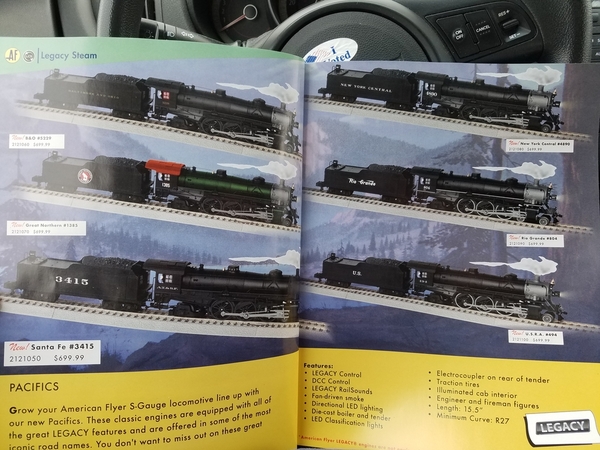@DL&W Pete posted:
I was wondering if there'd be an ATSF fantasy scheme. Technically, this isn't a bad base for ATSF modelers - pre-1947. I don't know what year 3415 was rebuilt but the class was pretty USRA-like until they were rebuilt. Even had 40 coal burners in the early years - though my guess they were all Oil burners by 1940.
Class 3400 (Locobase 124)
This was the last class of Pacifics bought by the Santa Fe and like so much of the railroad's stud, came from Baldwin. Similar to the USRA's Heavy Pacific in its tube and flue counts but fitted with a grate close in size to the USRA's Light Pacific and delivered with drivers close in size to the latter, these engines clearly reflected a relatively conservative approach on the part of head of motive power John Purcell. Worley (p.252) commented "...they were, truth to tell, quite ordinary post World War I Pacifics, just as average as such a locomotive could become."
Forty were delivered as coal burners and were later converted to oil burning, while the last ten burned oil from the beginning.
During the first fifteen or so years of service, the class saw few changes. A couple of engines were retrofitted with thermic syphons, Elesco feed water heaters were installed in many engines, and some were fitted with cast steel cylinders, but the only class-wide difference over the years was the trailing of a tender that carried 20,000 US gallons (75,700 litres) of water. The oil burners' tenders had 7,000 gallons of fuel oil (26,495 litres).
Then all but six of the class were completely rebuilt beginning in 1936; see Locobase 15875.
Class 3400-rebuilt (Locobase 15875)
Locobase 124 shows the 3400 class as delivered. The entry notes that the Santa Fe changed little in these engines for almost 20 years after they entered service. But beginning in June 1936, the railroad essentially rebuilt almost the entire class. Although fewer and shorter small tubes fit in the new boiler, the flue count remained the same. The firebox, which now burned oil in all engines, added AA security circulators and a short combustion chamber. A Commonwealth cast-steel bed cast integrally with the cylinders supported higher axle loadings and taller Boxpok drivers turning in Timken roller bearings.
After their makeover, the last of which was completed in 1947, the class served the Kansas City-La Junta, Newton (Kan)-Galveston (Tex), and Newton-Clovis (NM) divisions until their retirements in the mid-1950s.





